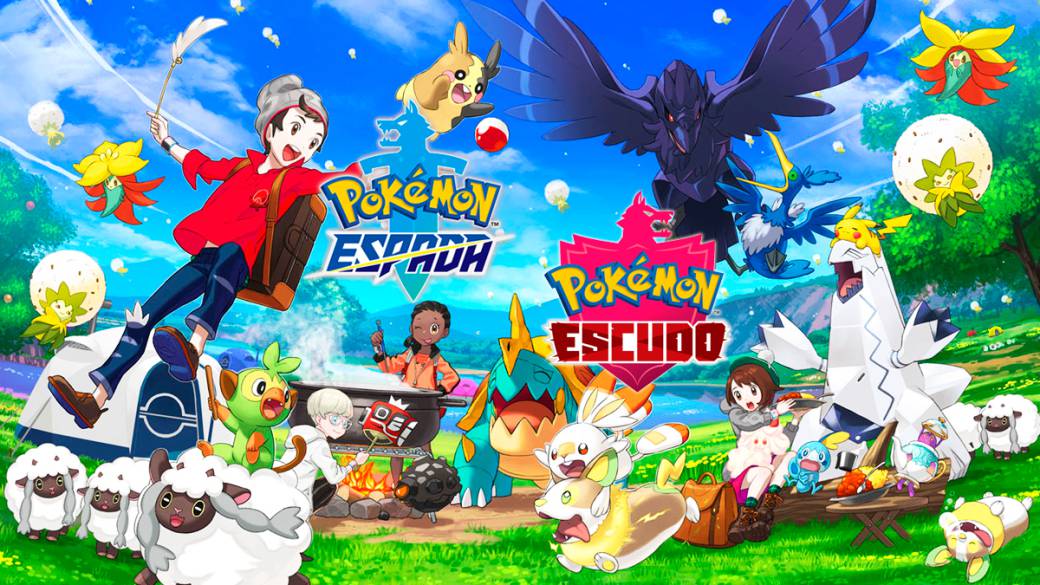
The best deliveries of the series in three dimensions arrive at Nintendo Switch tracing the path that will continue from now on. A significant leap.
Very few in Game Freak wanted to make the leap to the three dimensions back in 2011, when the sixth generation of Pokémon and the first in 3D began to take shape. It was difficult to make employees understand that they would participate in those deliveries led by Junichi Masuda that a way of working that had accompanied them for more than fifteen years had to be left behind. That we had to take the step.
And it happened, but in that process some personality was lost, character, definition was lost; a DNA that gradually recovered after Kalos, the return to Hoenn and Alola. Much has happened since then and times have continued to change until now, where Game Freak was going to have to face the first editions and the first generation made from scratch for a home console, hybrid, in which the limitations disappeared. Again, a change in the way of working and the possibility of taking a leap. Backpack, hat and buttoned laces, a tonic that we all know. It is time to start the eighth generation: the most solid, modern and open that we remember for many years. An unavoidable trip that, we warn, we cannot forget. Welcome to the Galar region.

The first step in a new way of understanding Pokémon
It was necessary to change, there is no doubt. A formula can be maintained over time if the necessary touches are applied so as not to give up the essence and thus allow gender to evolve. Pokémon needed those changes, rationalizing the time needed to do things and demonstrating that accessibility is not synonymous with loss of depth. All that has been achieved by Sword and Shield. He has done so with the guarantee of not betraying those who still think that Kanto and Johto live better and those who put their hands to their heads when they heard the word "parenting."
Those who wait here for the ultimate Pokémon experience may continue to wait, but what we do find in Galar is an implicit message that is readable very explicitly: this is the path that the saga will follow from now on. A cross between the classic and the modern that has managed to marry perfectly and that, without reaching excellence, shows that this qualification can come in the not so distant future.
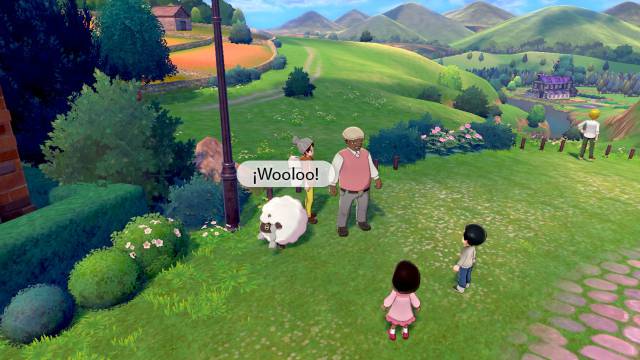
Because from the first encounter in the tall grass we see Pokémon running around again, at ease, without random fighting; although we also have a sign of admiration where randomness will do its job … if you want. In Espada y Escudo, time makes sense, while the playable experience is polished so that everything feels agile, fast, accompanied by a minimalist and modern interface. The first hour of play is direct, it gets to the point and is not lost in tutorials. Once you've chosen Grookey, Sobble or Scorbunny, everything else is what you see on the horizon. The Japanese studio, this time led by Shigeru Ohmori with Masuda in production, has managed to create editions for all types of audiences without relying on an extremely low difficulty, but through a fresh language where you have more tools than ever and where You, player, choose what, how and in what way. But let's get into the matter. It's been the first hour of departure, prepare the right stick, because you have to move the camera: this is the Wild Area.
Wild Area: when Pokémon said yes to the open world
It is one of the elements that has aroused more interest since the announcement of these deliveries and is, without doubt, one of the most positive aspects of this eighth generation, the Wild Area. Both Junichi Masuda and Shigeru Ohmori have recognized in more than one interview to take time wishing to approach an open environment, with a changing climate, where Pokémon and humans can meet in the middle of nature. And that is what we find, a place without barriers, large, where something always happens.
Because there are always surprises in the Wild Area, a place that we can access from the first stages of the adventure and from multiple points on the map given its magnitude; a lot of hectares where dozens of creatures from the eight existing generations await us and where hostilities go hand in hand with the inclement weather. Our first meeting in this place can be summarized in the following paragraph.
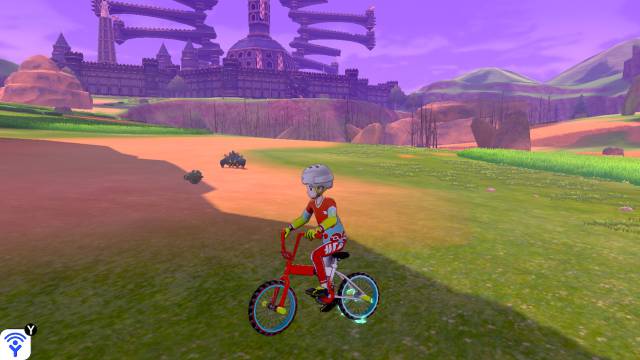
“A couple of slow piano chords, very slow, yield silence to the noise of the wind while, in the distance, one of the cities we have to visit to continue the story is sighted. It rains there. Further in the distance, it even snows; but it's sunny here, that's why we find more bug-type Pokémon like Combee and Cherubi on the tall grass and that's why the Zigzagoons run around trying to find the head of a Diglett. They say that there is a huge Steelix hidden somewhere in the desert ruins, but will it be true? Let's run to find out. ”
And you throw yourself. You try: face the unknown. Suddenly it can start raining when crossing the area – because there is an invisible division of zones to properly structure each fauna -, you can find on the way some occasional Gazing Weezing with his characteristic British hat; all until you run into that huge Steelix and the battle begins. The Intimidation ability is not required to convey the danger message: you are at level 15, but that wild creature is at level 60.
This had never occurred in the history of Pokémon. The Wilderness Area is also a place to train, where to find useful objects that you used to find on rare occasions throughout the adventure, such as the Carameloraro or the Maxipetitas; like the evolutionary stones that were hidden in a neighborhood store or like that blissful MT that you need to teach the desired movement.

And speaking of MT, now there are the DTs, a way to bring back the teaching of single-use attacks, something that we had been carrying from Generation V without remembering. It is not a bad idea because it introduces commerce in the Wild Area. When we make raids we will receive temporary objects; also when we find some of the passersby wandering around there shovel in hand. The currency of exchange is the Watts, which are used to buy those mentioned objects.
It is therefore necessary to talk more deeply about the Watts and the Raids, two of the differential elements that serve as backbone columns of this barrier-free environment. When we run aimlessly we will see large stones, some that radiate light to the sky in purple and even orange colors. This is no coincidence, but responds to one of the elements of the region of Galar, such as the Dinamax and Gigamax phenomenon, where creatures become giants and can even change their design, as is the case with the latter. , always for three shifts. The raids rotate through the Wild Area, but are seen hundreds of meters away. Once we reach them you can start the fight, in which up to four Coaches can participate. There are five categories (from one to five stars), from less to greater difficulty and, therefore, to greater difficulty better prizes. The Raids have a duration of ten full shifts and there are four lives: to the fourth weakening (there is only one Pokémon per Trainer), it's over. Only the host of the Raid can perform the Gigamax phenomenon on their chosen Pokémon, but the four participants can try to capture the target when the confrontation ends. The capture is not always successful; in fact, the captured species may not always be transformed into Gigamax, since the probability is somewhat low. All of them, however, are susceptible to being Dinamax, an improved level through the Dinamax Candies that we will get throughout the adventure.
There is even a nursery, which has peculiarities that you yourselves must know. For more inri, there are races against the clock by the time we have the bike. You can do practically everything you need for parenting without leaving the nursery.
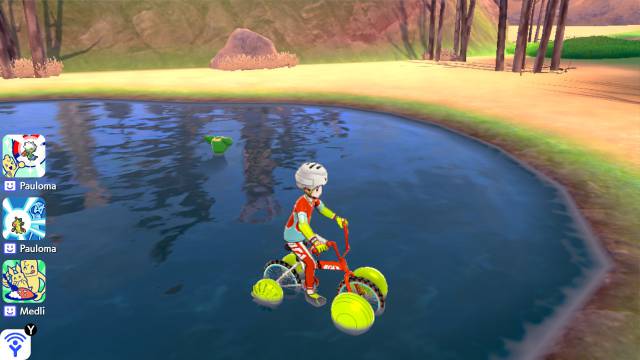
However, there is room for improvement in the Wild Area. We miss even more interactivity, which in the future may be a connected environment, closer to a massive online open environment, and that there is therefore no sense of loneliness as far as human beings are concerned. It is halfway between what is today a great open world and what we have finally found. Not surprisingly, the path is correct and the mission is partially accomplished.
The end you choose
We anticipate the question, how many hours can we dedicate to the Wild Area? The ones you want. Tens, maybe hundreds; It all depends on your goals. Because from November to January there will be a series of temporary Raids with Pokémon like Butterfree and Drednaw / Corvinight (depending on the edition), more frequently than usual. The best that Game Freak could learn from Niantic with Pokémon GO is here, and it's a fantastic thing because it injects life to these editions. There are so many species, the possibility of making chains to facilitate shiny encounters, the Pokémon with an aura around that indicates that that Pokémon has different characteristics to the rest … It is a place to get lost, where to dedicate that time you have free back home in public transport and where to meet other players, since it will not be necessary to be connected to the Internet to cross with Coaches or Coaches; Just be near another Nintendo Switch with Pokémon Sword / Shield.
Thanks to the Connection And everything is much easier. It is a natural evolution of the Pokémon X / Y Player Search System (2013, 3DS), only that it is enhanced and enhanced. Just by pressing Y we display a menu that allows you to carry out Exchanges, Surprise Exchanges, start fighting with other trainers or share your activity as if it were a social network. The timeline will always appear in the HUD of the screen, but if we open the menu we will see everything in more detail, such as if there is an active Raid to which we can join. It is so fast and comfortable that its ease of use has surprised us. So much so that we can be at a key moment in the adventure, away from the Wild Area, and have the possibility to open that menu and join the Raid. Unless you are in the middle of a fight, there are no barriers to Connection Y.
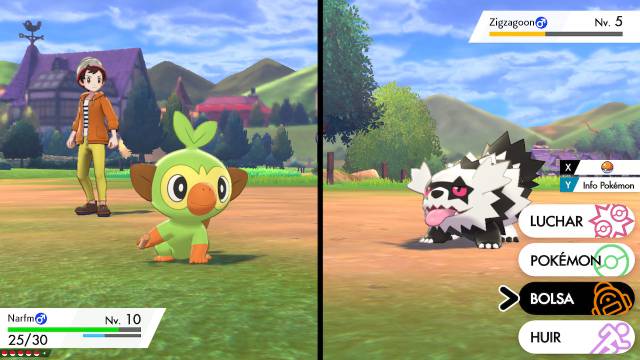
The Pokémon breeding already speaks your language: value the player's time
Talking about breeding in Pokémon has been a headache for many since ancient times. Neither Generation VI nor VII knew how to liven up or encourage the training of creatures for combat. That if EVs, that if IVs, that if egg movements transmitted by genetics … Game Freak has taken note and has updated these processes making the data tangible.
Vital in that change are vitamins. Here is a very quick explanation: each Pokémon has a maximum of 255 EV (stress points) for each characteristic, but the vitamins – Calcium, Iron, Protein … -, which grant 10 EV per unit, no longer have a limit of ten uses per creature, but there is no limit. In this way, what was once a limit of 100 EVs granted by Pokémon through vitamins, now allows us to add the 25 hit units. More time in our pocket.
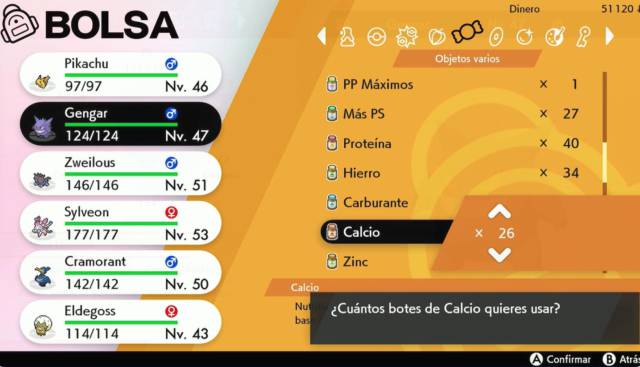
It is also the first time in the saga that you can change the Nature of a Pokémon manually. Imagine that you have hatched thirty Eggs from a Grookey, with the skill you wanted and an ideal genetics … but it has an ominous nature; that is to say, one characteristic is enhanced and another is worsened that you are not interested in training. You have a Grookey Firm (+ ATQ / -ATQ ESP) between eyebrows and eyebrows, now it will be enough to get a Mint to manually change nature. More time in our pocket. The icing on the cake is in the egg movements, which can be spread between species, thus forgetting other erratic and slow tasks.
All this, coupled with the fact that Sharing Experience is now a key smart object, makes the training fast, simple, but not banal: we must strive, but in ways that are in keeping with the times. When we finish a fight all Pokémon add experience, but not all the same. Those who participate in combat and those with lower level will add more; those with the highest level will add less, thus maintaining a natural balance where the weakest add more to facilitate them to reach level 50 as quickly as possible.
Because Pokémon Sword and Shield value player time. If you win a five-star Raid you can take, among other things, several XL-sized Candies where each one awards 30,000 experience points. This means that the creature you just hatched from an egg, at level 1, is set at level 45-48 in a matter of seconds. Let's forget to go to the Pokémon League again and again to do endless workouts. That ended. They are not giving you things, they are facilitating them through the gameplay itself. Make Raids, get lost in the Wild Area and let yourself go: the objects are coming by themselves and, when you want to realize, you will have everything you need to improve and enhance your Pokémon without having lost hours on the road.
Time, in short, is something that is estimated at all times. The inheritance of Pokémon Let’s GO is there in a good way, as in the elimination of mandatory random combats or the option to access the Pokémon Box at any time, without having to go to a Pokémon Center. Of course, we cannot do it in the Gyms to avoid that little “trap” that would make an illegitimate competition with the rival. Sword and Shield introduce the autosave to avoid possible game losses in cases where, without realizing it, we will spend several days with our Nintendo Switch in idle mode and run out of battery. It is in your hand to avoid losing several hours of departure since the autosave is applied whenever something happens or we change the environment. And yes, it can be deactivated, for the most purists or those who want to save manually before a complicated confrontation.
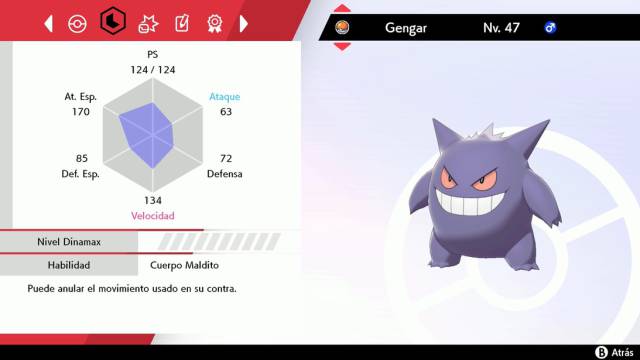
All in all, we are facing a video game that is very aware of the times we are in and the wide range of people that are going to buy these deliveries. Those who began in the first generation now exceed, yes or yes, twenty-five years; Some many more. Others, however, young people, are not used to playing JRPG where we have to perform the same task hundreds of times or where random combats are part of the DNA. Game Freak gives you the tools to adapt the playable experience as you want and not as the genre ruled a few decades ago.
If you do not have much time for these deliveries and want to go step by step, without being overwhelmed, but with the option of immersing yourself to depths that you had never imagined, here are the editions that you must acquire.
There are aspects that have not convinced us and that are still difficult to justify at this point. Pokémon Sword and Shield do not give the stature on a technical level. It is no longer just that they do not squeeze the hardware features of this system, Nintendo Switch, but it is not up to a blockbuster with a sales projection such that it can reach twenty million copies sold. The gaming experience allows you to rub shoulders with the best in the console catalog, a title that is enjoyed as much as that of the plumber, the fearful mustache and the brave man who wields a sword; but its beautiful and elegant artistic style does not stop us from biting our lips for what could have been at the graphic level … and it is not.
An artistic section with its own name: James Turner
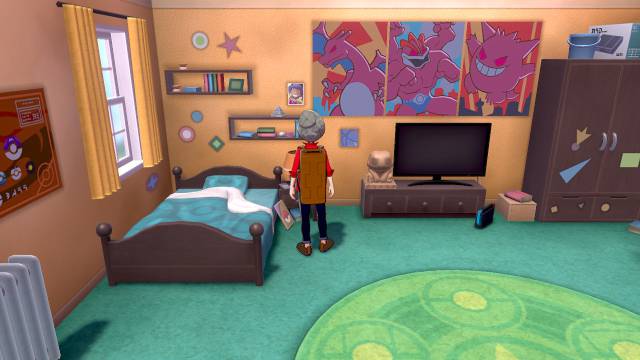
Luckily, as we said, the color palette and good taste with which the team of James Turner, artistic director, have designed everything, make the adventure reach those levels of beauty that scale to the top of the best regions of the saga.
Game Freak is a Japanese studio where traditionally only Japanese employees worked in the central offices. However, as pointed out by other studies such as the British Media Molecule, a greater diversity of cultures and ways of thinking more enrichment in all sections. Shigeru Ohmori's decision to yield the baton of design leader to James Turner, who debuted in Genious Sonority with Pokémon Colosseum and later in Pokémon XD, has been risky … but it is one of the greatest triumphs of these editions. His style, so particular and Europeanized, contrasts with the lines marked by Ken Sugimori for two decades. The differences are not many in terms of environments and fees, but they exist. It shows. The Galar region is very particular, it is based in the United Kingdom, and it is no accident. It is not because Turner is precisely British … and breathes on all four sides. References to the Anglo-Saxon archipelago are everywhere; from folklore to building architecture; from the interiors of the houses to the ways of dressing. Also in the design of the Pokémon, where there will not be a single gut here, although we warn that there are dozens of Galar's own species that have not been officially seen and that are, from this moment, some of our favorites. Turner's work in the artistic is simply outstanding.
There are moments that enter through the eyes, moments that impact as much as the first time we reach Arrecípolis in Hoenn or when we see the top of the Bell Tower in Johto: we will talk for many years about the Lumirinto Forest, of the ports of the coastal cities, of the architecture of the fortified city. An unforgettable region that is not a 1.5 version of Kalos, much less, although it does breathe that European touch so marked in the behavior of human beings, the shared culture and the way people dress.
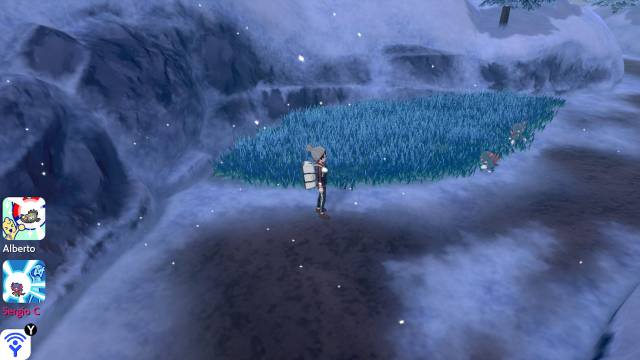
Memorable is also the soundtrack. Judging by the final credits of the game, Junichi Masuda has been well accompanied this time. His production work has once again had responsibilities in sound, but the nuances of Go Ichinose, which relies more on instrumentalization for the base bases, are more noticeable than before; or the participation of Toby Fox, who signs a really own and different theme. We did not expect something like that, honestly, because it is a style away from Pokémon: it is one hundred percent Undertale.
The sound design is the place where Game Freak has deposited all the nostalgic load of the work. Visually it looks modern, but auditory, if you close your eyes, you might think that we are in Sinnoh, in Teselia or in Hoenn. Because the pianos return, the percussion, the drums and the electric guitars return. The novelty is the bagpipes. Unlike Alola and Kalos, this time we find more wind instruments intermingled with electronic keyboards and touches that resemble, precisely, the France on which Kalos was based. The European touch of the imaginary Pokémon at its best: we love the result.
The weakness of Galar is the excessive linearity of the region. Leaving the Wild Area aside, it is a mapping with a shortage of puzzles, elements that prevent us from moving forward or intersecting routes. It is very similar to Teselia in this regard and, today, with the possibilities of Nintendo Switch, we expected more from the map.
More facilities and additions, with greater or lesser success
Pokémon Centers are again a versatile base of operations. With its integrated store where better objects will appear as we get more medals, the possibility of making Orders (reminiscent of Xenoblade Chronicles 2 expeditions) passive where after a few hours or days we have our Pokémon back with objects of all kinds and experience … You can also talk to a nice inhabitant of Galar who serves as a motorcycle inspector (we can even do it once if he is a Pokémon exchanged without a nickname) or a movement recorder. Facilities, again, to avoid having to point with paper and pen the place where the inspector hides.

Other locations that deserve mention are in the customization, which play in favor of the charisma of our avatar. Finally, this time we do not have several skins with just a selection of garments with different colors. This time there are brands, some natives of some towns or cities of Galar, garments more designed for cold or heat, to go elegant or closer to an athlete's style: hats, glasses, sweatshirts, pants, socks, backpacks … Find yourself at A Coach just like you is, at least, complicated.
The Poké Camp is one of those new features that arrive with each new generation and that, depending on the interest of the player, will be a daily visit or an element that goes completely unnoticed. It is an evolution of what was seen in the previous two generations of Nintendo 3DS, with the option of caressing and playing with our travel companions; with the proviso that this time we can cook many (dozens) of recipes through a most addictive minigame. The mechanics are very simple: we choose up to ten different berries, put them in the pan and … to cook. Depending on how we keep up with all these curri recipes we will get better or worse results, we will unlock more recipes for the CurriDex and receive better or worse rewards. The varieties are huge. Whether we play locally or connected to the Internet, in the Wild Area we can run into Poké Camps of other players and it will be possible to visit them, although interactivity is limited to being able to play and cook with them.
Let's talk about history and adventure
Tug of ears to the design of the main story, which is neither the most memorable in the saga (nor does it approach Teselia) nor is it resolved in the way we would have liked. There is a problem in the adventure: it starts in a memorable way, with a few absorbing first hours as we did not remember thanks to the presentation of the Wild Area. It takes a long time, in fact, to get to the first gym, more than ever, but it does it on purpose. From there the pace accelerates and routes, cities and towns are chained at high speed, in a comfortable and organic way. However, it is here that the game forgets to tell the story correctly and rushes sharply in the last hours of departure, where everything happens in somewhat anti-climatic ways. The epicity and spectacularity is there, that there are no misunderstandings, with two of the best moments in the history of the series, but it is important not so much the end – culminating at the top – as the way that end is managed.
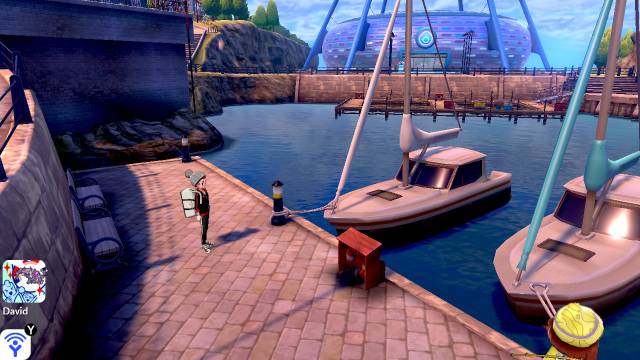
Team Yell, the group of villains, holds part of the humorous burden with its tumultuous and tumultuous displays. It is not the most charismatic group because not even their ambitions are such, although delving into details would be to fall into unnecessary gut. Nor do we have here the best rival of the series, unfortunately. A friendly, friendly guy, who will put us in the odd predicament, but that neither resembles Blue nor Silver. There is no such figure. The greatest reference is Lionel, a true leader, a champion at the height of the Máximo or Cintia. We also have a good assortment of Gym Leaders, with two differences between editions in two specific Gyms. Depending on the edition, as always, there will be a series of different Pokémon that we will be forced to exchange, not just the Legendary of the cover; but also in the gyms. The tests are a mix between what is seen in Alola and the previous editions. We believe that more could have been done given its simplicity in most cases, but it is adequately solved by culminating in challenging and very fun combats, always with Pokémon Gigamax by the leader.
What is perfectly designed is the difficulty curve. After two easy generations and without the need to think or learn the type table, these excessive clues are eliminated here and a level for the CPU has been established according to the circumstances; that demands, that thinks, that attacks in the majority of occasions where it hurts the most. In some gyms we will have a hard time if we are not well prepared, because Dinamax mechanics, even if it only lasts three turns and only adds life points to the affected, can leave us out of combat if the opponent uses it intelligently. We really liked the introduction of both Dinamax and Gigamax: they will give a lot to talk about in the competitive scene. Everything is said: a difficulty selector would solve all the mentioned problems; even a New Game +, but there is none of that. The talludos in the series will reach the end without difficulties, but the general difficulty of the adventure is slightly increased.
An infrastructure at the height: long-term game
Those looking for a real challenge will have to wait for the endgame (here we are going to read) or enter the aforementioned Five Star Raids or the online mode, which is nothing but a statement of the approach that Pokémon wants to give to a live game, whose online infrastructure inject life to the whole every month. It is already confirmed that there will be rotations in the frequency of some incursions periodically, also online tournaments. But the really interesting thing is that, for the first time, we have spectator mode. The streamers have a real Pandora's Box here: share code and … to watch tournaments. You can design your own championships and choose your rules: number of battles, level limitation, restricted objects … You choose who participates, when and if you want the rest of the world to be a spectator participant in your celebration. If we add to that the return of the prodigious exchange (now called Magic Exchange), the online mode makes more and more sense, literally, even if we play locally, thus taking advantage of the hybrid nature of this console.
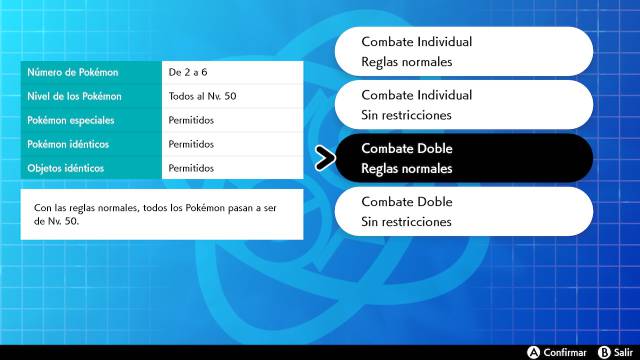
The League Card is another minor detail, a kind of customizable chrome that serves as a cover letter of our profile. You can collect those from other players and add them to an album; even those of Galar's Gym Leaders.
Throughout the more than 25 hours that the main adventure can take us at a normal pace – it all depends on the time you invest in the Wild Area – we have realized that Pokémon has not left behind some of the design elements of the routes or the conservatism of the combat system … and he will never stop doing it. Pokémon is like that and there are things that will never change. We are the first who want routes with more complexity, that there are more surprises besides trainers waiting standing on a hill or that in the cities there is more to do; That talking with the inhabitants of the villages has more substance. However, Game Freak not only says no but feels more comfortable than ever with this methodology. This serves as a warning to navigators: Pokémon does not have the will to change some of its signs of yesteryear, although this time comfort and that clash between simplicity with depth are better measured than ever.
If we go on to detail the technical aspects, this time we hardly find any frame drops per second: the game is polished and remains stable at 30 FPS, with sometimes dynamic resolution (see the Wild Area) but without loss of images per second. Both in TV mode and in portable mode the resolution lives up to the circumstances, as in Pokémon Let’s GO, whose performance in portable mode was one of the best in the console. Here it is repeated, with vibrant and colorful textures, within the limitations. Because that's where the main problem is: saw teeth, popping or textures that don't finish loading as they should; a clash of sensations where grass and water surprise how good they look … but where trees and some stones have textures that remind consoles of many years ago. A pity, because both the performance and the artistic section are at a level that does not match the polygonal load of some elements of the stage.
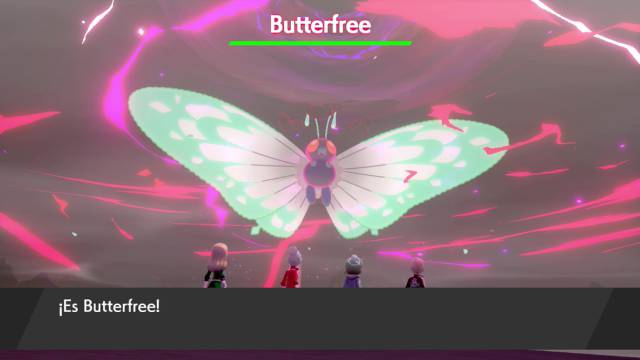
Before finalizing, it should be added that we especially liked the original way of managing the evolution of some of the new species, the incorporation of regional forms from native creatures of yesteryear (surprises are guaranteed) that even now evolve, or what comfortable that it is simply to move, either by land, by bicycle or by sea. At this point, despite the cut of the Pokédex to a figure that should be considerably higher, the result long fulfills its mission and compacts the whole in a remarkable way. This figure, which we cannot reveal, seems much lower than it should be. It is necessary to culminate, but these editions are established as the most solid of the whole three-dimensional era.
CONCLUSION
Let no one be confused: Pokémon Sword and Shield are two great video games; without a doubt, the best editions of the saga ever made in the 3D era. Quien esperase un salto que catapultase la serie a la excelencia puede seguir esperando, pero estas entregas cimentan el camino que recorrerá la saga en el futuro, y lo hacen de la forma más adecuada posible al valorar el tiempo del jugador, recompensar en todo momento y ante cada acción. Pokémon ha pasado a ser un JRPG moderno sin renunciar a su esencia, porque se siente como tal, de manera calculada y medida para contentar a quienes demandaban esos cambios y los que prefieren seguir como antaño. Una banda sonora de órdago, diseños de las decenas de nuevas especies de lo más originales y una nueva mecánica, el fenómeno Dinamax, que encaja a la perfección con el entorno competitivo, son algunos de los aspectos diferenciales de Galar. El Área Silvestre es la joya de la corona, una apertura de brazos al mundo abierto con margen de mejora, pero con unos principios que suponen, de base, un cambio radical en la forma que teníamos de entender la saga. Si no te gustaba Pokémon, es aquí donde debes comenzar; si te gustaba Pokémon, Espada y Escudo se harán un hueco inmediato entre tus entregas favoritas. La fórmula se mantiene inagotable, incombustible. Ahora está más viva que nunca.
LO MEJOR
- El Área Silvestre: pura naturaleza Pokémon
- Las Incursiones y la Conexión Y
- Las facilidades para la crianza: tu tiempo vale oro
- El diseño de las especies autóctonas de Galar
- La banda sonora y el apartado artístico, en general
- Las entregas más maduras desde Blanco y Negro
LO PEOR
- Taras gráficas difíciles de justificar
- La animación de muchos movimientos en los combates
- El diseño de aventura, muy lineal en las rutas
- Te importe o no, la Pokédex está reducida
Muy bueno
Juego de notable acabado que disfrutaremos y recordaremos. Una buena compra, muy recomendable para amantes del género. Está bien cuidado a todos los niveles.
